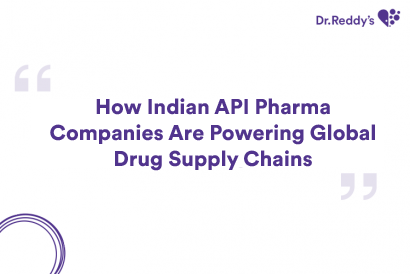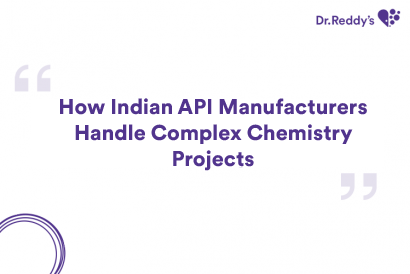API Quality Control Technologies & Strategies: Current Advancements for Benefiting Pharma Companies
The pharmaceutical industry is under constant pressure to deliver high-quality, safe, and efficacious Active Pharmaceutical Ingredients (APIs). Advancements in technology have significantly enhanced the capabilities of quality control (QC) departments, enabling them to ensure product excellence and compliance.
Key Technologies Driving API Quality Control
Spectroscopic Techniques:
- Near-Infrared (NIR) Spectroscopy: Rapid, non-destructive analysis of solid and liquid samples for identification, quantification, and quality assessment.
- Raman Spectroscopy: Provides molecular vibrational information for compound identification and characterization.
- Infrared (IR) Spectroscopy: Used for functional group analysis and impurity profiling.
- Chromatography:
- High-Performance Liquid Chromatography (HPLC): Precise separation and quantification of compounds for purity analysis and impurity profiling.
- Gas Chromatography (GC): Suitable for volatile compounds analysis, including residual solvents.
- Mass Spectrometry (MS): Coupled with chromatography for sensitive and specific detection and structural elucidation.
Process Analytical Technology (PAT):
- Real-time monitoring and control of critical process parameters (CPPs) to ensure consistent product quality.
- Includes in-line sensors, spectroscopy, and multivariate analysis for process optimization.
Automation and Robotics:
- Increased efficiency, precision, and reproducibility in sample preparation, testing, and data analysis.
- Reduced human error and improved data integrity.
Data Analytics and Artificial Intelligence (AI):
- Predictive modeling for process optimization and quality prediction.
- Anomaly detection for early identification of quality issues.
- Enhanced decision-making through data-driven insights.
Strategies for Benefiting Pharma Companies
Quality by Design (QbD):
- Proactive approach to product and process development, focusing on understanding critical quality attributes (CQAs) and process parameters (CPPs).
- Risk-based quality management for efficient resource allocation.
Continuous Improvement:
- Regular review of QC processes to identify opportunities for enhancement.
- Implementation of lean methodologies and Six Sigma principles for process optimization.
Supplier Management:
- Robust supplier qualification and auditing programs to ensure API quality.
- Collaborative partnerships with suppliers for continuous improvement.
Digital Transformation:
- Integration of digital technologies into QC workflows for increased efficiency and data management.
- Leveraging cloud-based platforms for data storage and analysis.
Regulatory Compliance:
- Stay updated with regulatory requirements and industry standards.
- Implement effective quality management systems (QMS) to ensure compliance.
Specific Benefits for Pharma Companies
- Improved product quality and consistency: Advanced technologies enable tighter control over the manufacturing process.
- Enhanced efficiency and productivity: Automation & data analytics streamline QC operations.
- Reduced costs: Optimized processes and early detection of issues minimize waste and rework.
- Faster time-to-market: Efficient QC processes accelerate product development and launch.
- Enhanced risk management: Proactive identification and mitigation of quality risks.
- Strengthened regulatory compliance: Robust QC systems and data management support compliance efforts.
Future Technologies in API Quality Control
The pharmaceutical industry is on the cusp of a technological revolution that will redefine API quality control. Here are some emerging technologies to watch:
Advanced Spectroscopic Techniques
- Terahertz (THz) spectroscopy: This technique offers unique advantages in analyzing molecular structures and interactions, providing deeper insights into API properties.
- Hyperspectral imaging: Combining imaging and spectroscopy, this technology enables detailed analysis of spatial variations in API samples, aiding in impurity detection and characterization.
Miniaturization and Lab-on-a-Chip
- Microfluidics: Enabling rapid, automated, and high-throughput analysis with minimal sample volume.
- Portable devices: Bringing analytical capabilities closer to the point of need, facilitating real-time monitoring and decision-making.
Artificial Intelligence and Machine Learning
- Predictive modeling: Leveraging AI to forecast potential quality issues based on historical data and process parameters.
- Image analysis: Automated analysis of microscopic images for particle size, shape, and impurity detection.
- Natural language processing: Extracting valuable information from unstructured data, such as lab reports and regulatory documents.
Blockchain Technology
- Supply chain transparency: Ensuring the authenticity and traceability of APIs throughout the supply chain.
- Data integrity: Protecting data from tampering and ensuring data reliability.
Quantum Computing
- Complex simulations: Modeling molecular interactions and predicting API properties with unprecedented accuracy.
- Optimization: Developing optimal manufacturing processes and quality control strategies.
Other Emerging Technologies
- Augmented reality (AR) and virtual reality (VR): Enhancing training and collaboration in QC processes.
- 3D printing: Enabling rapid prototyping of analytical instruments and devices.
- Biosensors: Developing real-time monitoring systems for critical process parameters.
By embracing these technologies and strategies, pharmaceutical companies can significantly enhance their API quality control capabilities, leading to improved product safety, efficacy, and patient outcomes.
- Call us:
 +91 40 49002253
+91 40 49002253
Contact Us
请填写以下表格,我们会尽快与您联系.





